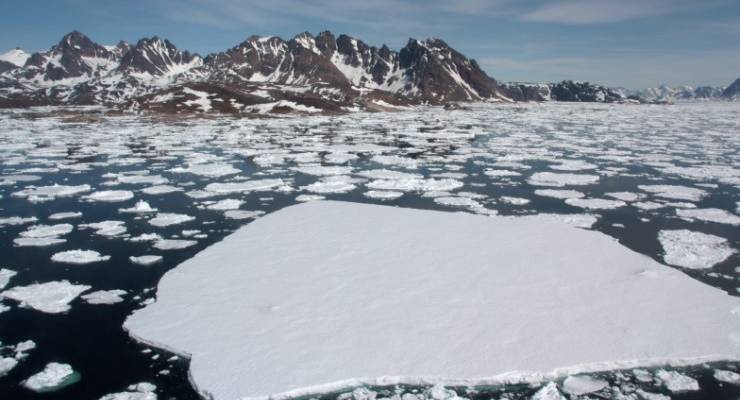
Australia has resubmitted its Paris Agreement climate goals to the United Nations — but it hasn’t changed a thing.
Every five years countries send the UN a nationally determined contribution submission, outlining progress made on meeting the Paris Agreement of holding warming well below two degrees and pursuing efforts to limit warming to 1.5 degrees.
While other countries have upped their targets to reflect the climate emergency, Australia has held on to the goals then prime minister Tony Abbott announced in 2015.
Here’s what some countries have done… and what Australia hasn’t.
The European Union
In December last year, the European Council endorsed a more ambitious climate target, setting its greenhouse gas emissions goal to 55% of 1990 levels by 2030. Previously the target was 40%.
Chile
In 2015 Chile committed to reducing CO2 emissions per GDP unit by 30% below 2007 levels by 2030. But last year it ditched the per GDP measurement unit, committing instead to absolute emission reduction targets.
Chile’s emissions are set to peak in 2025, although this could be done by 2023 if all its policies are implemented. Chile also committed to shutting down coal power plants by 2040.
South Korea
In 2015 the Republic of Korea pledged to cut greenhouse gas emissions by 37% by 2030. In its updated submission it pledged to increase emission reduction by 24.4% from 2017 levels, a more transparent and predictable measurement. It has also banned the construction of new coal-fired power plants.
China
China has yet to submit its 2020 nationally determined contribution to the UN, though President Xi Jinping made some unexpected pledges at last year’s General Assembly.
Xi committed to lowering CO2 emissions per GDP units by upwards of 65% from 2005 levels by 2030 — up from its previous goal of 40 to 45% — and said his country’s emissions would peak before 2030, which is earlier than expected.
Fiji
Australia’s climate policy never looks good when compared with Fiji’s. The small nation previously committed to reducing emissions by 30% from business-as-usual levels by 2030, but last year also legislated a commitment to achieve net-zero greenhouse gas emissions by 2050.
Norway
Norway has upped its goals, committing to reduce emissions by 50%-55% compared with 1990 levels by 2030, up from a target of 40% in 2015.
Norway aims to be a low-carbon society by 2050, although economists have raised concerns tax relief given to oil and gas companies during the COVID-19 pandemic could lead to it extracting oil and gas for longer than expected.
Australia
In 2015 Australia committed to reducing greenhouse gas emissions by 26%-28% of 2005 levels by 2030. Our latest submission recommitted to this goal, saying these targets were “a floor on Australia’s ambition” and Australia aims to “over achieve on this target”. New targets have not been set out.
There is a change in approach. Australia won’t use Kyoto carryover credits in reaching the 2030 target (something no other country ever planned to do), although this wasn’t mentioned in our submission.
Updated goals not enough
Australia may be lagging behind the pack, but according to Climate Action Tracker (a global initiative that monitors and assesses countries’ climate policies), none of these updated goals will meet the aim of the Paris Agreement.
Chile’s nationally determined contribution will hold warming to less than three degrees and is rated as insufficient, as is Australia’s, Norway’s and the EU’s. South Korea’s goals are rated as highly insufficient, limiting warming to less than four degrees, as are China’s.
Doing its fair share is India. Although it hasn’t updated its submission yet, its 2015 goals are considered compatible with keeping warming to less than two degrees, but not less than 1.5 degrees.








Nothing proves that the Muppet government governs only for its donors than its embarrassing refusal to take urgent and drastic action on atmospheric pollution. What is criminally negligent is that action of climate change presents Australia with our most fertile economic and social equity opportunity ever. That opportunity is ripe now, and has been for several years. Inaction is the now the only thing that makes action on climate change a matter of economic cost, and its is that discredited objection that is made now only by LNP donors. This is corruption in its purest form.
Seriously, why are Federal Govt(s) – LNP so out of sync with Australian Electorate? Climate denialism world wide is kaput! Climate response is climate survival of life on earth. As a species we cannot continue the utterly stupid political division of not only the electorate, but in truth, human survival. As the current PM once admonished Australians . . . “STOP IT!” CAN HE NOT HEED THE ECHO?
4 degrees Celsius increase amounts to humanity being a bit player on planet earth, lucky to survive in some small pockets around the globe, largely living a subsistence lifestyle with very few large animals to hunt.
3 degrees means large scale death and destruction due to weather events and land despoliation.
Why are we still arguing about the rights of fossil fuel companies to continue to rape and pillage.
I thought we were doing great…3-5 years of the worst drought in history, massive dust storms, months of chocking smoke from the biggest bushfires ever….I mean, what else can we possibly do???
As weather events become more extreme, countries that have been impacted will get less global assistance leading to extreme impoverishment and death. Some central American country, due to 2 hurricanes and poverty in general, now have the dubious honour of starvation leading to stunted children. It’s also a slave labour country – overseas corporations setting up facilities etc. Govt. probably a kleptocracy (or following USA business guidelines of democracy) so no free social assistance for the locals. This is happening elsewhere – you just don’t read/see it in our media.